INDUSTRIAL GASES
LT PIPE & FITTING SDN BHD GAS division supplies all types of welding and specialty gases as well as welding and safety products for all types of applications and industries. We refilling & distribute of industrial gases as following :-
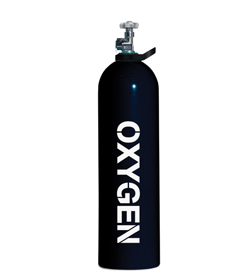
Oxygen
Oxygen (O2) – constitutes approximately 21% of the air we breathe, has a gaseous specific gravity of 1.105 makes it slightly heavier than air, and has a boiling point of 297.3oF (-183oC), it becomes a transparent, pale blue liquid that is slightly heavier than water. Oxygen also colorless, odourless, and tasteless % has poor solubility in water.
The principal uses of oxygen are indicative of its strong oxidizing and life-sustaining properties. It’s used in medicine for therapeutic purposes and used in treatment of patients with respiratory disorders. In the chemical and petroleum industries, oxygen can be used as a chemical reactant and in combustion systems to have increased reaction rates, yield improvements, reduced capital cost of new plants and reduced air emissions. Furthermore, in acid sulphuric mill, oxygen use to alter the structure of feedstocks through oxidation,producing nitric acid, ethylene oxide, propylene oxide, vinyl chloride monomer and other builing block chemicals.
Oxygen is used in the pulp and paper industry for a variety of applications, including pup bleaching, black liquor oxidation and lime kiln enrichment.
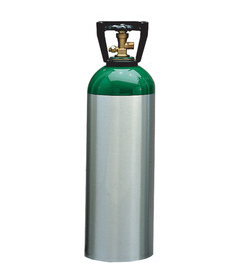
NITROGEN
Nitrogen (N2) – makes up 78.03% of air, has a gaseous specific gravity of 0.967 and a boiling point of suppressing combustion processes. In addition, as an inert gas it has an asphyxiating effect, as it displaces the oxygen required for the breathing Nitrogen has numerous applications in the industrial and research sectors because of its nonreactive nature with many materials.
In the chemical and petroleum industries, gaseous nitrogen applications include inerting reactors and storage tanks, purging vessels and pipelines of flammable or toxic gases and vapours, and the sparging and pressure transfer of liquids.
Food Industry use Liquid nitrogen freezes food & goods such as car tyre quickly, producing a higher-quality product. In addition, Nitrogen is used in brewing, soft drinks and wine-making industries to exclude air from the product and de-aerate water. The nitrogen keeps oxygen from damaging strored foods, preventing fats’ and other nutrients’ decomposition.
Heat treatment, pure nitrogen is used to protect some of the most reactive metals during heat treatment. These metals readily form a protective oxide surface layer from the small amount of oxygen in the nitrogen and need no further protection.
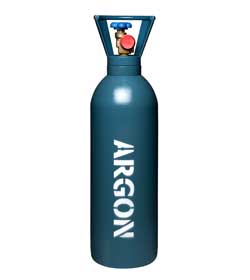
ARGON
Argon is a chemically inactive and belongs to the family of inert gas. It is 1.38 times heavier than air. It is odourless, tasteless, colorless, non-toxic, non-combustible, non-corrosive and does not react with other elements or chemical compounds.
Argon is widely used in incandescent lamp industry or the filling of light bulbs and fluorescent lamp. Furthermore, it also used with other rare gases in filling of special bulbs and display tubes for lighted signs.
In addition, argon also used in refining of stainless steel, dehydrogennizing reefing of melted aluminium, silicon ingot production, semiconductor fabrication, powdered metal fabrication and as a carrier gas for various analytical instrument.
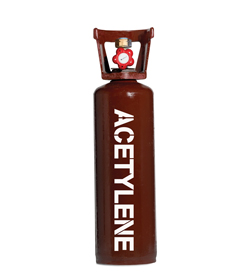
ACETYLENE
Acetylene (C 2H2) is a compound of carbon and hydrogen. A colorless flammable gas with a garlic-like odor. It is slightly lighter than air. It’s combustion with oxygen may produces a flame with temperature of approximately 3150o C, allowing it to be used in welding, cutting, brazing, heating and soldering metals.
The oxe-acetylene torch can be used to repair ships underwater, to construct bridges, pipelines, dams, tunnels, buildings and to reinforce concrete. When used with either oxygen or air, acetylene can produce a thin layer of black carbon particles. This can prevent components sticking in their moulds and help on mould release. In laboratory, acetylene is used in optical spectrometry as an instrumentation gas used in atomic absorption for elemental analysis as an instrumentation gas and used as a fuel gas in atomic absorption spectrometry for elemental analysis.
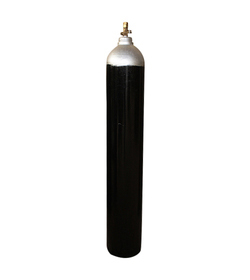
CARBON DIOXIDE
Carbon Dioxide (CO2) is a non-flammable, colorless, odouless and liquefied gas. Carbon dioxide gas is relatively nonreactive and nontoxic. Carbon dioxide is widely used in food and beverage industry. It is the source of the bubbles in soft drinks and other carbonated beverages. As a natural anti-microbial, carbon dioxide is also used to increase the shelf life of juice and dairy products, protecting taste and texture, and reducing the need for preservatives, natural and artificial. In addition, as a “dry ice” it also used in food freezing and chilling and packaging, mixer and blender cooling, and in-transit refrigeration.
Carbon dioxide commonly used as a shielding gas during MAG welding because it prevents atmospheric contamination of molten weld metal during gas shielded electric arc welding process. Besides, it is also used for CO2 lasers in welding and cutting. Carbon dioxide also play an important roles in many industrial process grinding sensitive material, rubber tumbling, cold-treating metals, shrink fitting of machinery parts and industrial cleaning by blasting and polishing.
It is used to fill certain types of fire extinguishers that rely on its inert properties, density, and low temperature when released from high-pressure storage.Injection of carbon dioxide allows to master the pH of liquid effluents. It’s safer and cheaper than sulphuric-acid systems, improves controllability, and there is less downtime and no labor to handle chemical. It also is less corrosive, and easier to handle and store. CO2 is an excellent alternative to sulphuric acid for pH balance control.
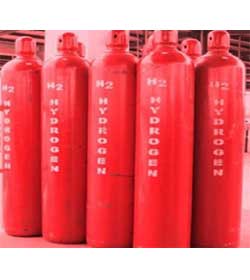
HYDROGEN
Hydrogen (H2) is a colorless, odourless, tasteless, flammable gas and the lightest gas known. Hydrogen finds use in diverse applications covering many industries. Large quantities of hydrogen is used in chemical syntheses mainly to manufacture ammonia and methanol, furthermore it also used to hydrogenate non-edible oils for soaps, insulation, plastics, ointments and other special chemicals. In food industry hydrogen is used tohydrogenate edible oils such as soybean , fish, cottonseed and corn, converting them to semisolid materials such as shortenings, margarine and peanut butter.
Hydrogen is used with oxygen in oxyhydrogen welding lead. In addition, it commonly mixed with argon for welding austenitic stainless and also used to support plasma welding and cutting operations.Hydrogen is a carbon-free energy source used in the fuel cells that create electricity through an electrochemical process in combination with oxygen.
Hydrogen used as carrier gas in semiconductor processes, especially for silicon deposition or crystal growing and as scavenger gas in atmosphere soldering as well as for annealing copper films. The use of forming gasses allows virtually a complete elimination of oxygen and its inconveniences in medium to high temperature processes.
